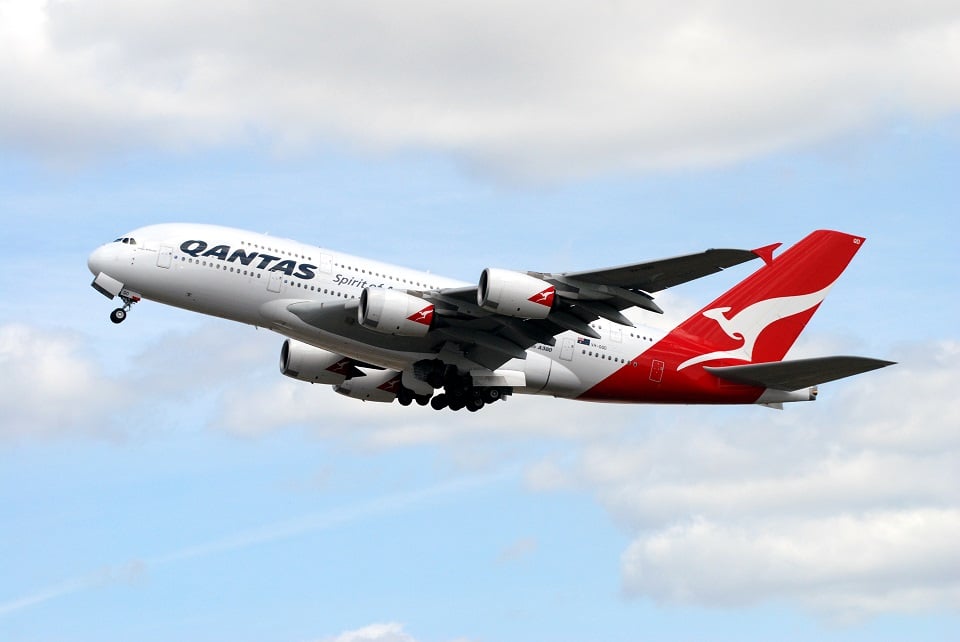Aviation
SpiceJet Q2 net profit jumps to Rs 105 crore

- Highest-ever Q2 profit
- Profits grow by 80%, Revenue by 30%
- Registers record Load Factor of over 90% for 30 successive months
- Domestic load factors in excess of 94% in Q2
- Launched fourth daily flight under UDAN on the Jaisalmer-Jaipur sector
Gurugram, November 13, 2017: SpiceJet reported a profit of INR 105.3 crore for the three months ended September 30th, 2017 as against INR 58.9 crore in the same quarter last year, making it the 11th successive profitable quarter for the airline. In the seasonal weak quarter, profits grew by 80% against a capacity growth of 22% during this period as against the same quarter last year. This is SpiceJet’s highest Q2 profit in its history of operations.
SpiceJet reported an operating revenue of INR 1814.3 crore in the quarter. On an EBITDA basis, SpiceJet reported a profit of INR 180 crore. On an EBITDAR basis, the Company reported a profit of INR 421.6 crore.
SpiceJet yet again excelled on operational parameters to report the highest passenger load factor amongst all airlines in the country all through the quarter. The company witnessed a 7% increase in its passenger yields (Revenue per Available Seat Kilometer) while its average load factor across the network was 93.1%. SpiceJet has recorded more than 90% load factor for 30 successive months, a feat unparalleled globally. Significantly the quarter also marked the fifth consecutive month when the airline’s domestic load factors have been in excess of 94%.
SpiceJet official press report

Aviation
Lost Tool Found in Qantas A380 After 34 Flights

An Australian Transportation Safety Bureau (ATSB) investigation recently revealed that a Qantas A380 operated 34 flights with a 1.25-meter nylon tool lodged in one of its engines.
This turning tool, used during borescope inspections to rotate the intermediate-pressure compressor, was left behind during scheduled maintenance at Los Angeles on December 6, 2023. It remained inside the engine until it was discovered by maintenance staff during a subsequent check at Los Angeles on January 1, 2024.
China Takes the Lead in Sixth-Generation Fighters with White Emperor B
The ATSB report highlights two critical lapses. First, maintenance engineers failed to notice the tool during final checks for foreign objects after the borescope inspection. Second, the lost tool procedure was not activated when the tool was identified as missing.
The certifying engineer ultimately cleared the aircraft for service without accounting for the misplaced tool. During the time qantas films the tool was inside, the A380 completed 34 flight cycles, accumulating nearly 294 hours without any noticeable effect on engine performance.
Although the tool was deformed by high-energy airflow within the engine, there was no reported damage to the engine itself. ATSB Chief Commissioner Angus Mitchell commented.
India’s C-295 to Gain Advanced Weapons for Maritime Surveillance
“This incident underscores the importance of following established maintenance protocols. Engineers missed the tool during foreign object checks, and the required lost tool procedure wasn’t started after realizing the tool was missing.”
Following the investigation, the airline issued a safety directive, urging all engineering and tool storage teams to adhere strictly to these protocols to prevent similar incidents in the future.
A qantas spokesperson stated, “While the tool didn’t impact engine performance, we take this incident very seriously. It is critical to follow the correct lost tool procedures.”
-

 Aviation2 months ago
Aviation2 months agoBoeing confirms 797: A New Era for Mid-Size Aircraft
-

 Aviation2 months ago
Aviation2 months agoMicrosoft Flight Simulator Raises $3 Million to Bring Back the An-225 Mriya
-

 Aviation2 months ago
Aviation2 months agoLockheed and Tata Team Up to Build C-130J MRO Facility in India
-

 Airlines2 months ago
Airlines2 months agoQantas Engineers Stage Walkout Over Cost of Living Concerns
-

 Airlines2 months ago
Airlines2 months agoQatar Citizens Can Travel to the United States Without a Visa
-

 Aviation2 months ago
Aviation2 months agoBoeing Offers 25% Pay Increase & Promise to Build Next Plane in Seattle
-

 Aviation2 months ago
Aviation2 months agoQatar Airways bans these new Electronic Devices on plane
-

 Airlines2 months ago
Airlines2 months agoEmirates Ends 28-Year Singapore-Melbourne Fifth Freedom Route








